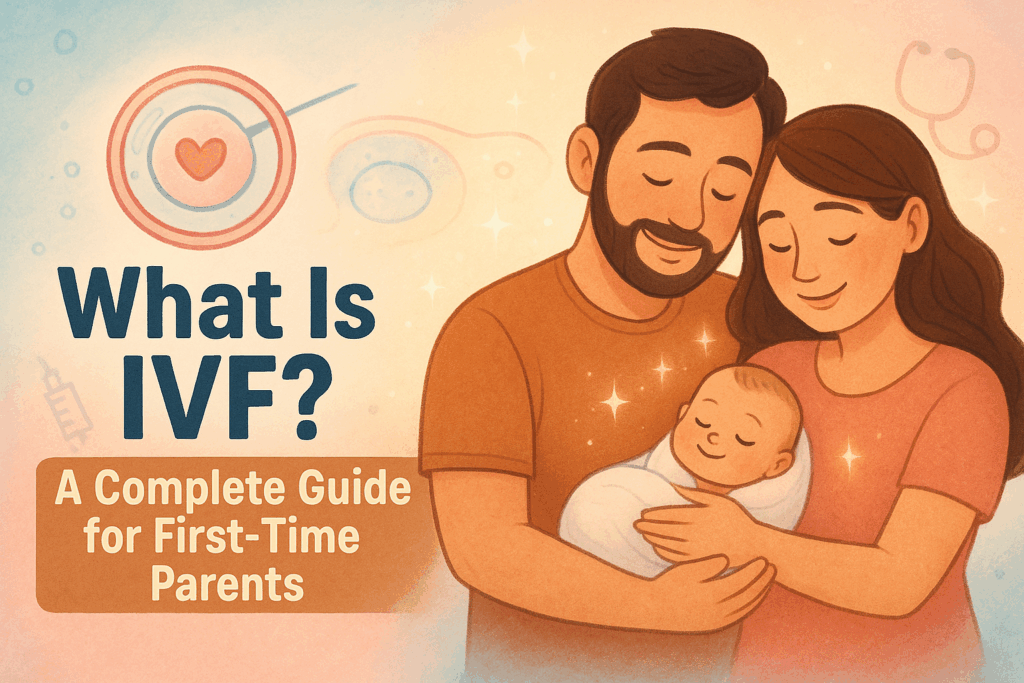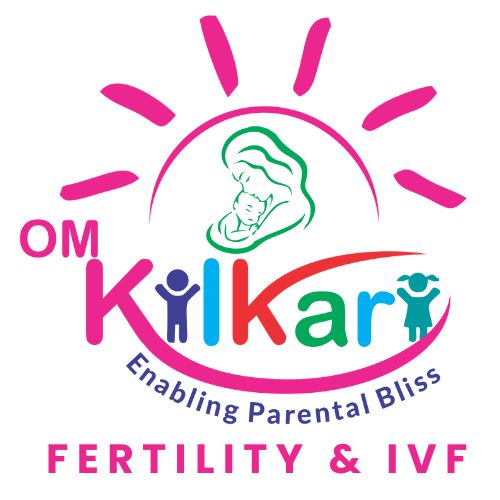
Becoming a parent is one of life’s most rewarding experiences, but for some, the journey isn’t always straightforward. In vitro fertilization (IVF) has helped millions of couples and individuals conceive when natural methods aren’t successful. If you’re considering IVF for the first time, this guide will walk you through the basics, the process, and what to expect.
What Is IVF?
In vitro fertilization (IVF) is an assisted reproductive technology (ART) where eggs and sperm are combined in a laboratory to create embryos. Once an embryo develops, it is transferred to the uterus, where it can implant and grow into a pregnancy.
IVF is often recommended for:
- Women with blocked or damaged fallopian tubes
- Male infertility (low sperm count or motility)
- Ovulation disorders or premature ovarian failure
- Unexplained infertility
- Genetic disorders requiring preimplantation testing
- LGBTQ+ couples and single parents pursuing parenthood
The IVF Process Step by Step
1. Ovarian Stimulation
- Fertility medications are used to stimulate the ovaries to produce multiple eggs (rather than the single egg typically released each month).
- Regular monitoring via blood tests and ultrasounds ensures optimal egg development.
2. Egg Retrieval
- A minor surgical procedure retrieves mature eggs from the ovaries using a thin needle (under sedation).
- The procedure takes about 20–30 minutes.
3. Sperm Collection
- A sperm sample is collected (from a partner or donor) and prepared in the lab to isolate the healthiest sperm.
4. Fertilization
- Eggs and sperm are combined in a lab dish (conventional IVF) or via intracytoplasmic sperm injection (ICSI), where a single sperm is injected directly into an egg.
- Fertilized eggs develop into embryos over 3–5 days.
5. Embryo Transfer
- One or more healthy embryos are transferred into the uterus using a thin catheter.
- Any remaining high-quality embryos can be frozen for future use.
6. Pregnancy Test
- About 10–14 days after the transfer, a blood test confirms whether implantation was successful.
Success Rates & Factors Affecting IVF
IVF success depends on several factors, including:
- Age – Younger women (under 35) have higher success rates.
- Lifestyle – Smoking, obesity, and excessive alcohol can reduce success.
- Reproductive health – Underlying conditions like endometriosis may impact outcomes.
- Clinic expertise – Choosing a reputable fertility center improves chances.
On average, success rates per cycle range from:
- 40–50% for women under 35
- 30–40% for women 35–37
- 20–30% for women 38–40
- 10–15% for women over 40
Risks & Considerations
While IVF is generally safe, potential risks include:
- Multiple pregnancies (if more than one embryo is transferred)
- Ovarian hyperstimulation syndrome (OHSS) (rare but serious)
- Ectopic pregnancy (embryo implants outside the uterus)
- Emotional & financial stress
Cost of IVF
IVF can be expensive, with costs varying by location and treatment needs:
- U.S. Average: 12,000–12,000–15,000 per cycle (medications extra)
- U.K. Average: £5,000–£8,000 per cycle (NHS may cover some cases)
- Other Countries: Some couples explore IVF abroad for lower costs.
Insurance coverage varies, so check your policy.
Emotional Support & Coping Tips
The IVF journey can be emotionally taxing. Here’s how to cope:
- Join support groups (online or in-person)
- Practice self-care (yoga, meditation, therapy)
- Communicate openly with your partner
- Set realistic expectations – Success may take multiple cycles.
Final Thoughts
IVF has opened doors to parenthood for countless families, but it’s important to be well-informed before starting. If you’re considering IVF, consult a fertility specialist to discuss your options and create a personalized plan.
Are you an IVF parent? Share your experiences or questions in the comments below!
Would you like any additional sections, such as alternative fertility treatments or preparing for an IVF cycle? Let me know how I can refine this further!
full blog with table and 3000 word blog
What Is IVF? A Complete Guide for First-Time Parents
Table of Contents
- Introduction to IVF
- Who Should Consider IVF?
- How Does IVF Work?
- Step-by-Step IVF Process
- Success Rates of IVF
- Risks and Side Effects of IVF
- Cost of IVF Treatment
- Emotional and Mental Health During IVF
- Alternative Fertility Treatments
- Preparing for an IVF Cycle
- Frequently Asked Questions (FAQs)
- Conclusion
1. Introduction to IVF
In vitro fertilization (IVF) is one of the most effective assisted reproductive technologies (ART) available today. It involves combining eggs and sperm outside the body in a laboratory dish, allowing fertilization to occur in a controlled environment. Once embryos form, they are transferred into the uterus, where they can implant and develop into a pregnancy.
Since the first successful IVF birth in 1978 (Louise Brown, the world’s first “test-tube baby”), millions of babies have been born through this method. IVF has given hope to couples struggling with infertility, same-sex couples, and single parents who wish to conceive.
Why Is IVF Used?
- Blocked or damaged fallopian tubes – IVF bypasses the need for the egg to travel through the tubes.
- Male infertility – Low sperm count or poor motility can be overcome with IVF (especially ICSI).
- Ovulation disorders – Women with PCOS or irregular ovulation benefit from controlled stimulation.
- Unexplained infertility – When no cause is found, IVF can still help achieve pregnancy.
- Genetic screening – Preimplantation genetic testing (PGT) can prevent hereditary diseases.
- Same-sex couples & single parents – IVF with donor sperm or eggs makes parenthood possible.
2. Who Should Consider IVF?
IVF is recommended for individuals or couples facing:
| Condition | How IVF Helps |
|---|---|
| Female infertility | Bypasses fallopian tube issues, ovulation problems |
| Male infertility | ICSI can fertilize eggs even with low sperm count |
| Endometriosis | Improves chances by retrieving eggs before damage occurs |
| Advanced maternal age | Uses fertility drugs to increase egg production |
| Genetic disorders | PGT screens embryos for abnormalities before transfer |
| Same-sex couples | Donor sperm or eggs can be used for conception |
| Single parents by choice | Enables pregnancy using donor sperm/eggs and surrogacy if needed |
If you’ve been trying to conceive for over a year (or six months if over 35) without success, a fertility specialist may recommend IVF.
3. How Does IVF Work?
IVF follows a structured process:
- Ovarian Stimulation – Hormonal injections stimulate multiple egg production.
- Egg Retrieval – A minor surgical procedure collects mature eggs.
- Sperm Collection – Partner’s or donor’s sperm is prepared.
- Fertilization – Eggs and sperm are combined in a lab.
- Embryo Culture – Embryos grow for 3–5 days.
- Embryo Transfer – Best-quality embryo(s) are placed in the uterus.
- Pregnancy Test – Blood test confirms success after ~2 weeks.
4. Step-by-Step IVF Process
Step 1: Ovarian Stimulation (8–14 Days)
- Medications used: FSH, LH, hCG injections.
- Monitoring: Ultrasounds and blood tests track follicle growth.
Step 2: Trigger Shot & Egg Retrieval
- hCG trigger ensures final egg maturation.
- Egg retrieval is done under sedation (20–30 mins).
Step 3: Sperm Collection & Preparation
- Fresh or frozen sperm is washed and prepared.
Step 4: Fertilization (Day 0)
- Conventional IVF – Eggs and sperm mixed in a dish.
- ICSI – Single sperm injected into each egg (for male infertility).
Step 5: Embryo Development (Days 1–5)
- Embryos monitored for quality; some may undergo genetic testing (PGT).
Step 6: Embryo Transfer (Day 3 or 5)
- Catheter transfers 1–2 embryos into the uterus.
Step 7: The Two-Week Wait & Pregnancy Test
- Progesterone support continues until a blood test confirms pregnancy.
5. Success Rates of IVF
IVF success depends on:
- Age – Younger women have higher success rates.
- Lifestyle – Smoking, obesity, and stress reduce chances.
- Clinic expertise – Choose a reputable fertility center.
IVF Success Rates by Age (Per Cycle)
| Age Group | Live Birth Rate per Cycle |
|---|---|
| Under 35 | 40–50% |
| 35–37 | 30–40% |
| 38–40 | 20–30% |
| Over 40 | 10–15% |
6. Risks and Side Effects of IVF
| Risk | Description |
|---|---|
| Ovarian Hyperstimulation Syndrome (OHSS) | Swollen, painful ovaries (rare but serious). |
| Multiple Pregnancy | Higher risk with multiple embryo transfers. |
| Ectopic Pregnancy | Embryo implants outside the uterus. |
| Emotional Stress | Anxiety, depression due to hormonal changes and uncertainty. |
7. Cost of IVF Treatment
| Country | Average Cost per Cycle (USD) |
|---|---|
| USA | 12,000–12,000–15,000+ |
| UK | £5,000–£8,000 (NHS may cover) |
| India | 3,000–3,000–5,000 |
| Thailand | 4,000–4,000–7,000 |
Additional costs may include medications, genetic testing, and frozen embryo transfers.
8. Emotional and Mental Health During IVF
- Support groups (Resolve, Fertility Network)
- Therapy & counseling
- Mindfulness & stress management
9. Alternative Fertility Treatments
- IUI (Intrauterine Insemination) – Less invasive, lower success rates.
- IVM (In Vitro Maturation) – Eggs matured outside the body.
- Natural Cycle IVF – No stimulation drugs, fewer eggs retrieved.
10. Preparing for an IVF Cycle
- Healthy diet & exercise
- Avoid smoking/alcohol
- Prenatal vitamins (folic acid)
11. Frequently Asked Questions (FAQs)
Q: How long does an IVF cycle take?
A: About 4–6 weeks from stimulation to embryo transfer.
Q: Does IVF guarantee pregnancy?
A: No, but it increases chances significantly compared to natural conception in infertility cases.
Q: Can I choose the gender of my baby with IVF?
A: Yes, with PGT, but ethical and legal restrictions apply in many countries.
12. Conclusion
IVF is a powerful tool for overcoming infertility, but it requires physical, emotional, and financial commitment. Consulting a fertility specialist will help determine if IVF is right for you.
Have you undergone IVF? Share your journey in the comments below!
